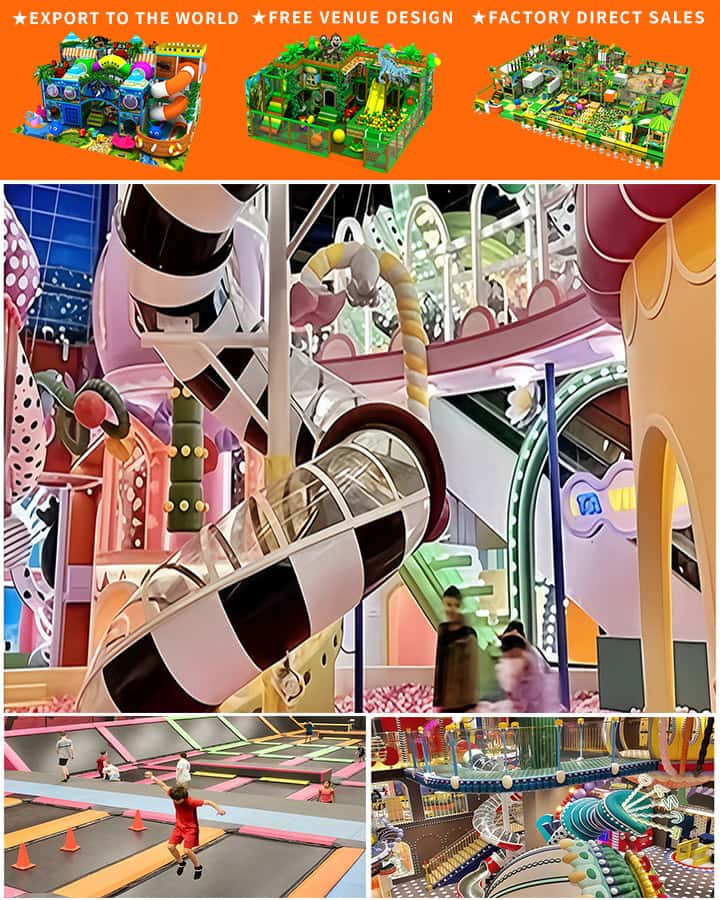In today’s fast-paced world, finding engaging and safe environments for children to play and develop is more important than ever. Kids play zones have emerged as a popular solution, offering structured yet imaginative spaces that cater to the diverse needs of young minds. This article delves into the various aspects of kids play zones, including their benefits, safety measures, design elements, and tips for choosing the best one for your child.
The Benefits of Kids Play Zones
Kids play zones are far from just recreational areas; they play a crucial role in a child’s overall development. Here’s how:
Physical Development: Engaging in physical activities like climbing, sliding, or running around helps improve motor skills, coordination, and muscle strength. These activities are essential for developing healthy bones and muscles, as well as fostering an active lifestyle.
Social Skills: Interacting with peers in a play zone setting teaches children vital social skills such as sharing, teamwork, empathy, and conflict resolution. These experiences are critical for emotional intelligence and forming healthy relationships in the future.
Cognitive Development: Many play zones are designed with educational elements in mind. From problem-solving challenges to creative building blocks, these activities stimulate cognitive growth, enhancing learning abilities and encouraging curiosity.
Emotional Well-being: A well-designed play area can significantly boost a child’s mood and self-esteem. Successfully navigating through obstacles or creating something new gives them a sense of accomplishment and builds confidence.
Safety First: Essential Measures in Kids Play Zones
Safety is paramount when it comes to kids play zones. Here are some key safety measures that should be in place:

Soft Surfacing: Ground materials should be soft and impact-absorbent to prevent injuries from falls. Common options include rubber mats, wood chips, and synthetic turf.
Proper Equipment Maintenance: Regular inspections and maintenance are necessary to ensure all equipment is in good condition. Loose bolts, rusty metal, or broken parts should be addressed immediately.
Safe Design: Play zones should be free from sharp edges, pinch points, or other hazardous elements. Slides and ladders must have handrails, and surfaces should be non-slip.
Adequate Supervision: Trained staff should monitor the play area to keep an eye on potential dangers and to assist children if needed. Proper signage should also indicate age-appropriate areas and rules.
Design Elements that Make Play Zones Engaging
An engaging play zone isn’t just fun but also thoughtfully designed to captivate children’s interests and stimulate development. Here’s what makes a great play zone design:
Diverse Play Areas: Incorporating a mix of physical, educational, and sensory play areas keeps things interesting and caters to different interests. Think climbing walls, sand pits, water features, and interactive games.
Imaginative Themes: Themed play areas—like pirate ships, fairy-tale castles, or jungle adventures—ignite creativity and make the experience more immersive for children.
Age-Appropriate Sections: Different sections tailored to varying age groups ensure that every child finds suitable and challenging activities. This also minimizes the risk of younger children being overwhelmed by more complex structures.
Inclusive Design: Play zones should be accessible to all children, including those with disabilities. Features like ramps, tactile paths, and adaptive equipment make play possible for everyone.
Choosing the Right Kids Play Zone
When selecting a play zone for your child, consider the following factors:
Location and Accessibility: Choose a conveniently located play zone that is easy to get to and offers ample parking or public transport options.
Cleanliness: Ensure the facility is well-maintained and clean. Check for hygiene practices, especially in communal areas or where children might put their hands in their mouths.
Reputation and Reviews: Research online reviews and ask for recommendations from other parents to gauge the quality and safety of the play zone.
Cost and Membership Options: Evaluate the cost against your budget. Some play zones offer membership discounts or package deals, which could be more economical for frequent visits.
Opening Hours and Policies: Verify the hours of operation and any specific policies regarding food, footwear, and supervision requirements.
Conclusion
Kids play zones are invaluable resources that provide a balanced mix of fun and developmental opportunities for children. By prioritizing safety, inclusivity, and thoughtful design, these zones can become a second home for adventure and learning. Whether you’re a parent looking for a great place for your child to spend their energy or an investor considering opening a new play zone, understanding these key elements will help create a nurturing and enjoyable environment for kids of all ages.




